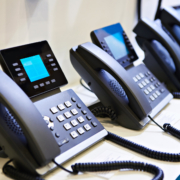Home Network Security Checklist
A home network security checklist is a useful tool to ensure that your network is secure from potential threats. Below is a comprehensive list of steps you can follow to maintain a safe home network environment:
Home Network Security Checklist
1. Update router firmware
– Regularly check your router manufacturer’s website for firmware updates and install them promptly. Updated firmware ensures that your router operates with the latest security enhancements.
2. Change default router password
– Create a strong, unique password for your router administrator login. Avoid using easily guessable passwords or the default password provided by the manufacturer.
3. Set up a secure Wi-Fi network
– Utilize WPA3 encryption when setting up your Wi-Fi network. Additionally, create a strong and unique password for the Wi-Fi network.
4. Enable a guest Wi-Fi network
– For visitors, enable a separate guest Wi-Fi network to minimize the risk to your primary network.
5. Disable remote management
– Disable the remote management feature in your router settings to prevent unauthorized access.
6. Disable WPS (Wi-Fi Protected Setup)
– WPS can be exploited by attackers; therefore, it is better to disable this feature.
7. Enable router firewall
– Turn on the built-in firewall in your router settings to add an extra layer of security.
8. Keep devices up-to-date
– Regularly update the operating systems and software on all devices connected to your home network to close potential security vulnerabilities.
9. Install antivirus and anti-malware software
– Install trusted antivirus and anti-malware software on your devices and keep them up-to-date.
10. Enable DNS filtering
– Consider using a DNS filtering service such as OpenDNS, which can block malicious websites and potentially harmful content.
11. Use a secure domain name system (DNS) server
– Utilize a reliable and secure DNS server to prevent domain spoofing and other online threats.
12. Switch off UPnP (Universal Plug and Play)
– Disable UPnP in your router settings, as it may expose your network to security risks.
13. Secure IoT devices
– Strengthen the security of your IoT devices by changing default passwords, updating firmware, and isolating them on a separate network if possible.
14. Monitor network activity
– Regularly check for unusual activity on your devices or home network by using network monitoring tools.
15. Create regular backups
– Schedule regular backups of your important data to protect it from loss or theft.
16. Implement strong access controls
– Make sure to use strong, unique passwords for all your online accounts and enable multi-factor authentication (MFA) wherever possible.
17. Encrypt your files
– Consider encrypting sensitive files stored on your devices to safeguard them from unauthorized access.
18. Secure cloud storage
– Use a secure and reputable cloud storage provider, enable encryption, and use strong authentication methods to protect your data.
19. VPN (Virtual Private Network)
– Use a VPN service to encrypt your internet traffic and protect your online activities from being tracked or intercepted.
20. Limit device-to-device connections
– Minimize the number of devices that can connect to each other on your home network, and only allow trusted devices to do so.
21. Disable unused features and services
– Disable any unused features, services, or ports on your devices and router to reduce potential attack vectors.
22. Educate your family
– Teach your family members about the importance of cybersecurity and good online habits, such as avoiding suspicious emails, links, or websites.
23. Disable SSID broadcasting
– Disabling SSID broadcasting makes your Wi-Fi network less visible to casual users, although more advanced users and hackers can still detect it. This may help reduce the likelihood of potential intruders attempting to access your network.
24. Prepare an incident response plan
– Create a plan outlining the steps to take in case of a security breach or loss of data, including whom to contact, what actions to take, and how to recover your data.
25. Perform regular network audits m
– Routinely assess your network’s security to identify vulnerabilities and address them accordingly.
By following this checklist, you can better protect your home network from potential security threats and ensure a safe digital environment for yourself and your family.













